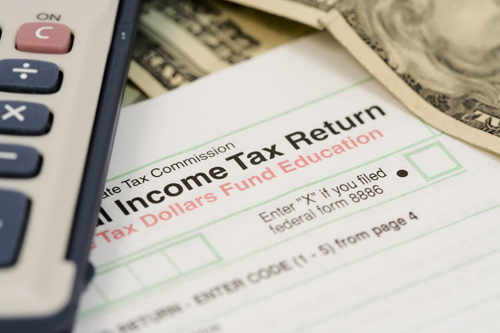Make a plan to save some of your tax refund
Written by New Ventures Maine | Published on March 9, 2019
Blog by Dave Sieminski and Jill Wheeler of the Consumer Financial Protection Bureau – FEB 07, 2019
Making a plan to save at tax time
As you gather your tax records and prepare to file, why not use this annual responsibility to take another step towards building financial security for yourself or your family? For many Americans, a tax refund is the largest check they will receive all year. Saving all or part of that refund can help you prepare for unforeseen expenses throughout the year or perhaps reach a larger savings goal.
Research has shown that setting aside just $500 can cover a lot of the emergency expenses people often experience. Perhaps, though, you want to catch up on some bills, save for a major purchase, or even treat yourself to something special. Whatever you have in mind, tax time is a great opportunity to put money aside.
Here are some basic steps to take.
1. Estimate your refund. Think about how much you might get back in a refund, based on what you received last year. Keep in mind, there were several changes to the tax laws in 2018. Find out how these changes could impact your refund this year.
2. Identify and prioritize your bills. This includes essentials like rent and utilities, as well as bills you would like to pay off or pay down. If you need help, the Bureau has several helpful worksheets to track your spending and get a handle on your debt.
3. Plan for special purchases. Consider if there are any larger purchases you would like to make with part of your refund.
4. Calculate what remains. Add up your expenses, payments, and purchases to see what you might have left over from your refund.
5. Make a plan to save. Set a goal to save a portion of what’s left over from your refund. Perhaps it’s $500, or 25 percent of your refund. Whatever you choose is OK — just make a plan so you have a savings goal. Use our tax time worksheet to help you design your plan.
6. Finally, decide where you want to put your savings. Do you have a separate account or another way to set money aside? Or perhaps you have a prepaid card with a set aside feature. If you have an account or a card you want to use for saving, make sure to have both your account and routing numbers available when you file your return. Rather than waiting for a check, the IRS can often directly deposit your refund into this account.
Getting ready to file
Depending on your situation, there may be a number of free or low-cost options for filing your tax return. It’s important to choose a reputable tax preparer that will file an accurate return. Any mistakes could result in additional costs and complications in the future.
You can generally get free tax preparation assistance by IRS-certified volunteers at a Volunteer Income Tax Assistance (VITA) or a Tax Counseling for the Elderly (TCE) location if:
Your income is $54,000 or less
You are 60 years old or older
You have a disability or speak limited English
The IRS locator tool will help you find a VITA site near you.
If you are not eligible to file at a VITA site or if there is not a VITA site nearby, there are also other free resources available for filing your tax return. Here are some options:
If your income is $64,000 or less, you can use a major tax-preparation software product, offered through the IRS Free File Alliance , to prepare and file your return for free.
If your income is more than $64,000, you can still download free tax filing forms through the IRS.
If you’re a member of the military or a military dependent, you can get free tax help from the military VITA program. On or off base, VITA programs are easy to find — even overseas.
Other things to consider at tax time
1. Protect your tax data from being stolen. The IRS provides a number of simple steps you can take to protect your data.
2. Be aware of tax scams. The IRS provides some helpful information on what to watch out for and how the IRS will communicate with you if they have questions about your return.
3. Know your rights if you live in an area affected by disaster. In some disaster situations, the IRS provides relief from tax filing requirements. Find out whether you qualify .
Putting it all together
Planning ahead can help you to take advantage of tax time to make the most of your tax refund. Take some simple steps to make a savings plan. If you are eligible, save on filing fees by using one of the free or low-cost filing options. Finally, make sure you protect your tax information so that you can feel confident that your return is filed properly and you get the refund you have earned.
